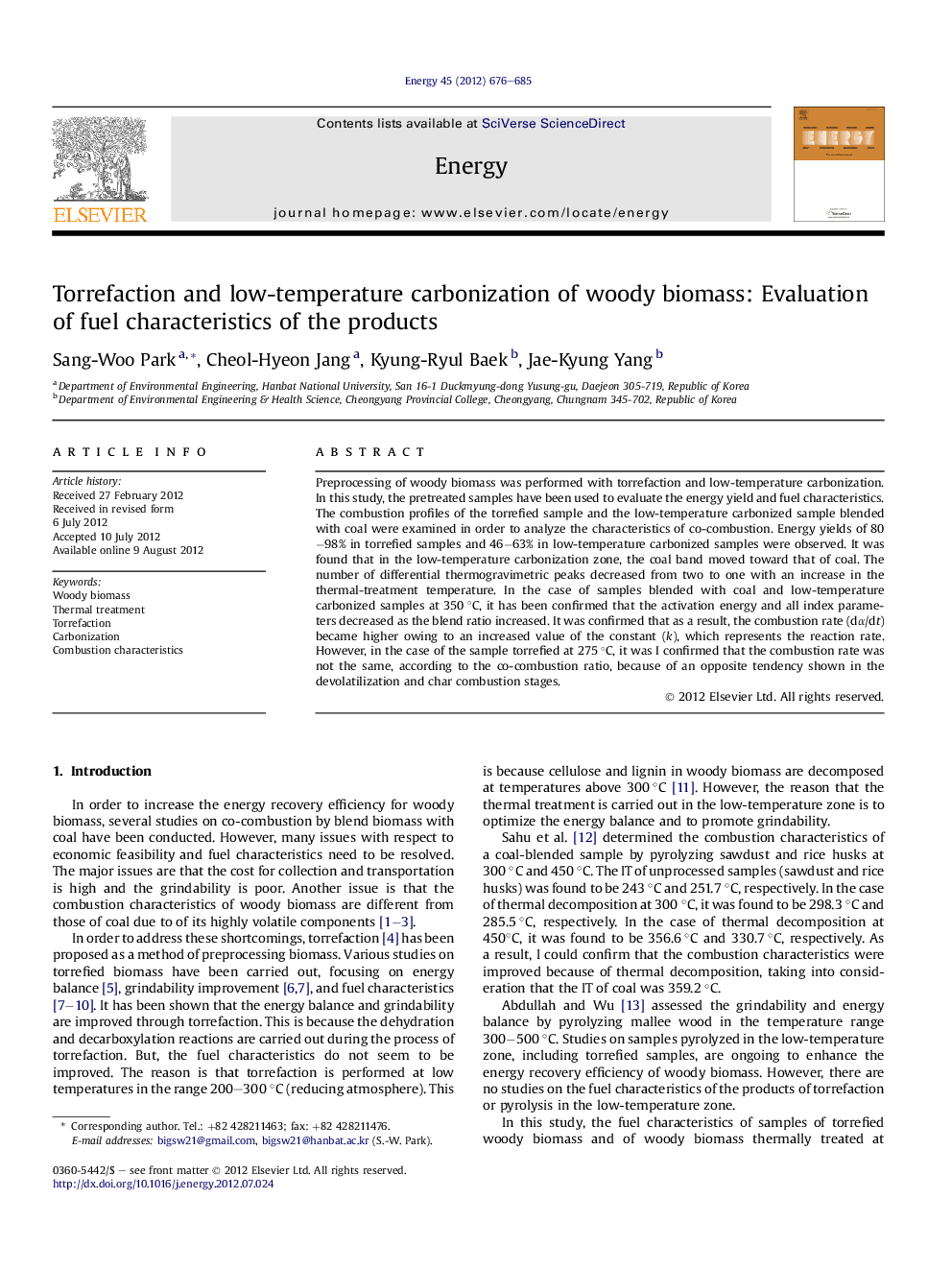| Article ID | Journal | Published Year | Pages | File Type |
|---|---|---|---|---|
| 1733715 | Energy | 2012 | 10 Pages |
Preprocessing of woody biomass was performed with torrefaction and low-temperature carbonization. In this study, the pretreated samples have been used to evaluate the energy yield and fuel characteristics. The combustion profiles of the torrefied sample and the low-temperature carbonized sample blended with coal were examined in order to analyze the characteristics of co-combustion. Energy yields of 80−98% in torrefied samples and 46−63% in low-temperature carbonized samples were observed. It was found that in the low-temperature carbonization zone, the coal band moved toward that of coal. The number of differential thermogravimetric peaks decreased from two to one with an increase in the thermal-treatment temperature. In the case of samples blended with coal and low-temperature carbonized samples at 350 °C, it has been confirmed that the activation energy and all index parameters decreased as the blend ratio increased. It was confirmed that as a result, the combustion rate (dα/dt) became higher owing to an increased value of the constant (k), which represents the reaction rate. However, in the case of the sample torrefied at 275 °C, it was I confirmed that the combustion rate was not the same, according to the co-combustion ratio, because of an opposite tendency shown in the devolatilization and char combustion stages.
► Preprocessing of woody biomass was performed with torrefaction and low-temperature carbonization. ► Thermally treated samples were examined to evaluate the fuel characteristics. ► Energy balance, coal band, and FT-IR spectra were evaluated. ► DTG analysis to determine combustion characteristics was performed and a two-step combustion model was applied.
